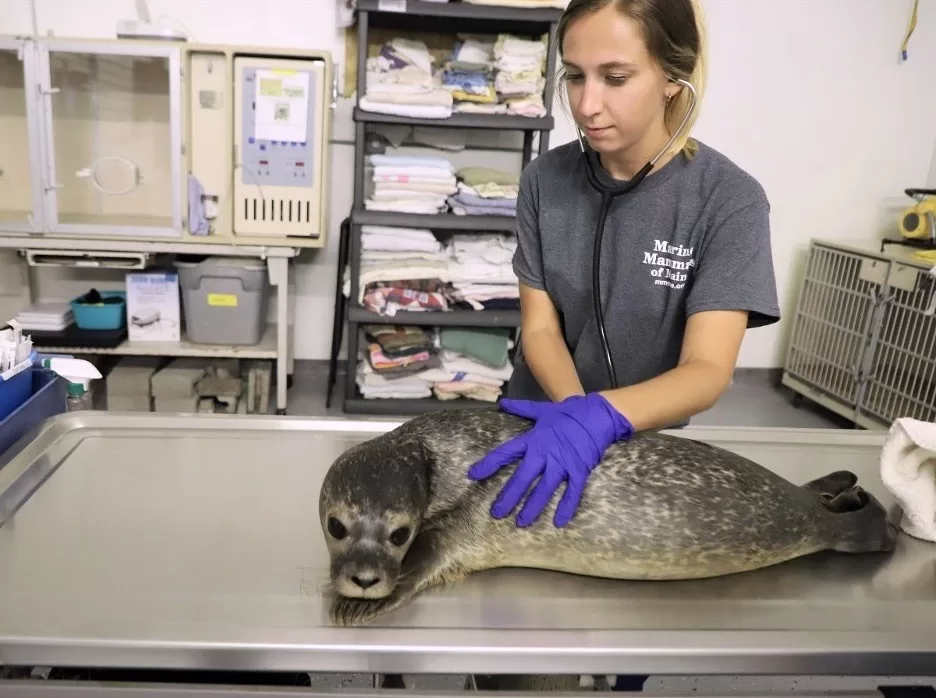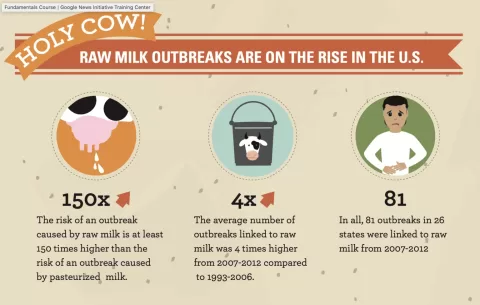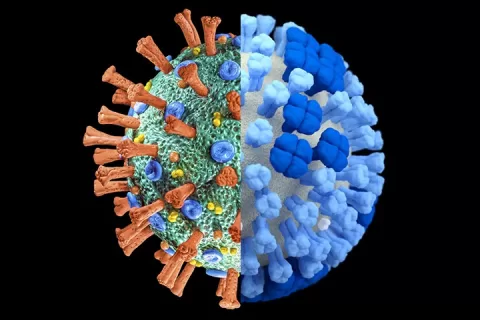H5N1 avian influenza has emerged as a significant threat to marine mammals, with recent outbreaks causing alarming mortality rates among species such as harbor seals and bottlenose dolphins. The highly pathogenic avian influenza A(H5N1) clade 2.3.4.4b virus has demonstrated enhanced pathogenicity, particularly in the respiratory tracts of these animals. Research indicates that this respiratory tract virus attachment is crucial to understanding the high rates of marine mammal infections we currently observe, which may lead to severe disease manifestations. The ability of the H5N1 virus to effectively attach to respiratory epithelial cells means that marine mammals are increasingly susceptible to these infections. As we explore the implications of H5N1 on marine wildlife, it becomes clear that ongoing monitoring is essential for preventing further outbreaks and safeguarding these vulnerable species.
The emergence of avian influenza, specifically the H5N1 strain impacting marine mammals, has raised urgent concerns among wildlife specialists and conservationists alike. Known for its severe impact on avian populations, the H5N1 clade 2.3.4.4b virus has shown that the risks extend far beyond birds, affecting marine life in unprecedented ways. Higher transmission rates in species like seals and dolphins illustrate the complex dynamics of these marine mammal infections as they grapple with this respiratory pathogen. Evaluating the attachment patterns of H5N1 to the respiratory systems of these creatures may shed light on the increased susceptibility and pathogenicity observed in marine mammals today. This expanding outbreak emphasizes the need for comprehensive studies on the transmission routes and impact of aquatic viruses on marine ecosystems.
Understanding HPAI H5N1 in Marine Mammals
Highly pathogenic avian influenza (HPAI) H5N1, particularly the clade 2.3.4.4b strain, has emerged as a critical concern for marine mammals. These infections have been connected to significant mortality events, raising alarms among conservationists and wildlife health experts. The pathogenicity of H5N1 in marine mammals can be primarily attributed to the virus’s ability to attach effectively to the respiratory tract tissues, facilitating an easier infection process. Detailed examinations reveal that marine mammals such as seals and dolphins are increasingly vulnerable to outbreaks, linked to the changing dynamics of HPAI spread amongst avian populations and the environmental conditions that accompany global distribution of these viruses.
The transmission routes of avian influenza H5N1 into marine ecosystems highlight the importance of understanding host specificity and the changes it incurs within marine mammal inflammation and disease severity. Recent cases of H5N1 infections in harbor seals and porpoises underscore the need for in-depth epidemiological studies to uncover the trends and triggers of these spillover events. Studying the behavior and impact of H5N1 clade 2.3.4.4b provides insight into how viral infections can transition from avians to mammals, indicating significant risks not only for wildlife but also for public health as zoonotic diseases remain a forefront concern.
H5N1 Clade 2.3.4.4b: Risks and Patterns of Infection
The emergence of H5N1 clade 2.3.4.4b has profoundly affected marine mammal populations, reinforcing the necessity for surveillance and research into respiratory tract virus attachment. This clade of H5N1 has shown a heightened ability to bind to the epithelial cells within the respiratory tracts of marine mammals when compared to previous strains. Research indicates that the bonds formed between this avian influenza variant and the respiratory tissues of marine mammals facilitate disease progression, resulting in clinically severe outcomes. Understanding these attachment mechanisms becomes essential for predicting potential outbreaks and formulating effective health responses for affected marine species.
In studying marine mammal infections, the differences in pathogenicity associated with various H5N1 strains, such as clade 2.1.3.2 versus 2.3.4.4b, reveal significant implications for wildlife health management. The increased virulence in newer strains indicates a shifting ecological balance and raises concerns about the potential for widespread extinction among vulnerable species. Continued examination of virus-host interactions may pave the way for developing vaccinations or treatment strategies that can halt the progression of H5N1 disease in marine mammals, mitigating risks associated with future infections.
The Role of Respiratory Tract Virus Attachment in Disease Severity
Respiratory tract virus attachment plays a critical role in determining both the severity and the extent of H5N1 infections in marine mammals. Our investigations into the attachment patterns of the clade 2.3.4.4b virus have demonstrated that receptor binding is not uniform across species, with some, like gray seals, experiencing more pronounced viral load in their lower respiratory tracts. The mechanism through which H5N1 adheres to mucosal cells and penetrates these tissues underlines the virulence factors at play and reveals essential insights into disease progression among affected mammals.
A deeper understanding of attachment patterns warrants the need to track viral evolution and assesses how these mechanisms evolve over time. As H5N1 continues to transmute and adapt, the potential for novel strains to arise increases, thereby posing more significant risks to marine mammal populations. Enhanced knowledge about cellular interactions and pathogenicity will not only improve diagnostic capabilities but also provide critical data for preparing effective wildlife management strategies.
Surveillance Efforts and Public Health Implications
The rising incidence of H5N1 in marine mammals necessitates robust surveillance efforts to mitigate public health risks. Continuous monitoring of marine mammal health allows for early identification of unusual trends in infection rates and disease outbreaks. Institutions and organizations dedicated to wildlife health can implement proactive measures to protect both animal populations and neighboring human communities. Enhanced surveillance can facilitate immediate responses to outbreaks, preventing spillover events that would amplify the risk of zoonotic transmission.
Fostering a collaborative approach involving researchers, wildlife conservationists, and public health officials is essential in effectively managing the threats posed by avian influenza viruses. Engaging the public in awareness campaigns also helps establish an understanding of risks associated with H5N1 infections. Increased education on the importance of reporting unusual wildlife mortality events can aid in early detection of disease spread, maintaining better health outcomes for both marine mammals and the larger ecosystem.
Impacts of Climate Change on H5N1 Transmission
Climate change poses a significant factor influencing the spread and transmission of H5N1 avian influenza viruses to marine mammals. Variations in temperature and weather patterns can alter the migration routes of wild birds, which significantly affects disease dynamics and host interactions. These environmental changes create opportunities for previously isolated strains, like H5N1 clade 2.3.4.4b, to spread into new regions, impacting marine biodiversity and ecosystem stability.
As marine mammals encounter these shifting ecological landscapes, understanding the effects of climate change on disease prevalence becomes crucial. Researchers must consider the interconnectedness of climatic factors and wildlife health when assessing the potential impacts of H5N1 outbreaks in marine environments. Developing adaptive strategies that promote resilience among marine mammal populations will be vital in countering the consequences brought on by climate-induced changes.
Advancements in H5N1 Research and Vaccine Development
Recent advancements in understanding the distinct characteristics of H5N1 avian influenza have spurred significant progress in vaccine research. Tailoring effective vaccines that account for the unique challenges presented by H5N1 clade 2.3.4.4b will be essential for protecting both marine mammals and potentially exposed humans. Developing vaccines geared towards marine mammal populations poses unique challenges but presents a frontier in preventing outbreaks and curtailing severe disease presentations.
Current research focuses on developing a safer approach that would stimulate immunity without the risk of adverse effects. This endeavor not only provides a foundation for marine mammal health but also contributes to the broader public health objective of controlling infectious diseases originating from wildlife. Continued investment in research will yield insights into viral evolution and transmission patterns, ultimately informing the future of preventive measures against avian influenza in marine ecosystems.
Global Response Strategies Against Avian Influenza
The global response against the spread of H5N1 avian influenza requires coordinated efforts among international health organizations, wildlife management authorities, and researchers. This multifaceted approach aims to establish effective frameworks for monitoring and controlling outbreaks among affected species. Collaborative strategies are essential in not only containing the spread of H5N1 among marine mammals but also developing robust responses capable of addressing zoonotic threats posed to human health.
Implementing joint initiatives can promote sharing of data and surveillance findings across borders, enhancing early detection capabilities. This globalized effort will empower participating countries to better manage wildlife health, bolster public awareness, and ensure the protection of both marine mammal populations and human communities. By prioritizing health alliances, stakeholders can mitigate the risks posed by worsening H5N1 dynamics in marine ecosystems.
Conservation Efforts Amid H5N1 Challenges
Conservation efforts for marine mammals must evolve in response to the challenges posed by the resurgence of H5N1 infections. Initiatives aimed at protecting vulnerable species must integrate disease monitoring components to safeguard marine biodiversity amid increasing threats from avian influenza. Developing targeted interventions tailored to specific marine mammal populations can help bolster resilience against infections and improve survival rates among critical species.
Furthermore, collaborating with local communities and stakeholders is vital in fostering a sustainable approach to marine conservation in the face of emerging infectious diseases. Engaging the public in conservation initiatives empowers communities as custodians of their local ecology, directly involving them in preserving wildlife health. Enhancing the synergy between conservation strategies and disease management will crucially protect not only marine mammals but the entire marine ecosystem.
Future Directions in H5N1 Marine Mammal Research
Looking ahead, future research on H5N1 in marine mammals should focus on unraveling the complexities of viral adaptation and its implications for disease management. Investigating the molecular mechanisms underpinning respiratory tract virus attachment can provide insights into understanding how marine mammals experience varying levels of susceptibility. This research will be vital for creating informed management strategies for wildlife health specialists working to mitigate the effects of H5N1 outbreaks.
Additionally, interdisciplinary approaches that combine molecular biology, ecology, and epidemiology will be crucial for addressing the multifaceted challenges presented by H5N1 infections. Developing predictive models that incorporate environmental factors and species-specific responses could greatly enhance our understanding and response capabilities to avian influenza threats in marine ecosystems. By harnessing innovative research methodologies, we can empower stakeholders and wildlife health professionals to proactively manage H5N1 infections and safeguard marine mammal populations.
Frequently Asked Questions
What is the impact of H5N1 avian influenza on marine mammals?
H5N1 avian influenza, particularly clade 2.3.4.4b, has been associated with significant mortality events in marine mammals such as seals and dolphins. Recent infections have shown a higher severity of disease linked to the virus’s ability to attach effectively to respiratory tract cells, indicating a higher pathogenicity in these animals.
How does H5N1 clade 2.3.4.4b virus attach to marine mammal respiratory tracts?
The H5N1 clade 2.3.4.4b virus demonstrates strong attachment to ciliated epithelial and olfactory mucosal cells in the upper respiratory tracts of marine mammals. This enhanced attachment improves the virus’s ability to infect these species, leading to increased disease severity and susceptibility.
What are the transmission patterns of H5N1 avian influenza among marine mammals?
Transmission patterns of H5N1 avian influenza among marine mammals indicate that clade 2.3.4.4b is capable of spreading through various pathways, often highlighted by outbreaks in regions where wild birds harbor the virus. Continuous circulation among wild bird populations is a precursor to infections in marine mammals.
What are the signs of H5N1 infection in marine mammals?
Signs of H5N1 avian influenza infection in marine mammals may include respiratory distress, lethargy, and increased mortality rates. The severity of disease varies by species, largely due to the differences in cell tropism and respiratory tract attachment patterns of the virus.
Why are harbor seals and bottlenose dolphins susceptible to H5N1 clade 2.3.4.4b infections?
Harbor seals and bottlenose dolphins show heightened susceptibility to H5N1 clade 2.3.4.4b infections due to the virus’s favorable attachment to the cells in their respiratory tracts. This cellular affinity translates to increased efficiency of infection, resulting in more severe disease outcomes.
What does the research indicate about the pathogenicity of H5N1 clade 2.3.4.4b in marine mammals?
Research indicates that H5N1 clade 2.3.4.4b exhibits higher pathogenicity in marine mammals compared to earlier strains. The study shows that this strain attaches more abundantly to respiratory tissues, contributing to the worsening health and higher mortality rates in affected species.
What measures are being taken to monitor H5N1 avian influenza in marine mammals?
Ongoing surveillance is crucial for monitoring H5N1 avian influenza in marine mammals. Research efforts focus on tracking infection rates and understanding the dynamics of virus transmission to mitigate risks posed to both animal populations and human health.
How does H5N1 avian influenza affect respiratory health in marine mammals?
H5N1 avian influenza significantly impacts respiratory health in marine mammals by causing severe infections that can lead to respiratory failure. The enhanced viral attachment to respiratory tissues in these species exacerbates health outcomes and can result in high mortality rates.
| Key Point | Details |
|---|---|
| H5N1 Virus Impact | H5N1 clade 2.3.4.4b has caused significant mortality in marine mammals. |
| Cell Tropism | Higher infection rates are linked to virus attachment patterns in the respiratory tracts. |
| Virus Attachment Patterns | H5 2022 attaches more abundantly in lower respiratory tracts compared to H5 2005. |
| Research Methods | Used virus histochemistry on marine mammal respiratory tissues for analysis. |
| Need for Surveillance | Increased understanding of H5N1 dynamics is necessary to protect marine wildlife. |
Summary
H5N1 avian influenza marine mammals have been severely impacted by the clade 2.3.4.4b virus, leading to significant mortality rates and increased pathogenicity. The study reveals crucial insights into how these viruses attach to respiratory tissues, underscoring the urgent need for comprehensive surveillance and research to safeguard marine species and prevent potential health risks to humans.
The content provided on this blog (e.g., symptom descriptions, health tips, or general advice) is for informational purposes only and is not a substitute for professional medical advice, diagnosis, or treatment. Always seek the guidance of your physician or other qualified healthcare provider with any questions you may have regarding a medical condition. Never disregard professional medical advice or delay seeking it because of something you have read on this website. If you believe you may have a medical emergency, call your doctor or emergency services immediately. Reliance on any information provided by this blog is solely at your own risk.








